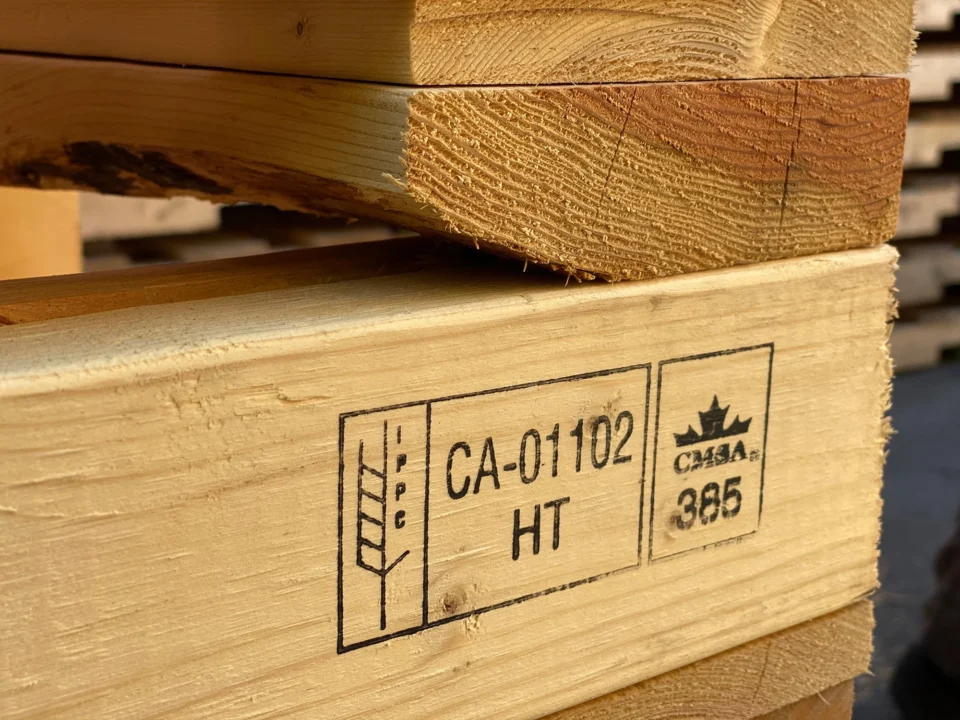- Skylar Impex
- +91 7506004348
- 02245124301
- skylarimpex@gmail.com

Wooden Pallets vs. Plastic Pallets: Which One is Right for You?
January 28, 2025
ISPM 15 Heat Treatment vs Chemical Fumigation – Which Is Better?
February 20, 2025ISPM 15: Why Compliance is Critical for International Shipping
ISPM 15 is a global rule for wooden packaging. It stops pests and diseases from spreading. This protects ecosystems and agriculture.
ISPM 15 certification shows compliance. It helps businesses avoid fines and delays. Following these rules protects goods, trade routes, and the environment.
Purpose of ISPM 15
ISPM 15 aims to protect agriculture and ecosystems. It stops pests from spreading through wooden packaging. This helps safeguard food security and biodiversity.
The standard reduces the risk of pests crossing borders. The treatment kills harmful insects in the packaging. By following these rules, countries keep pests out.
Key Components of ISPM 15
ISPM 15 treats wood packaging with heat or fumigation. These methods kill pests and prevent their spread. Proper treatment ensures safe international shipping.
The ISPM 15 stamp confirms that the packaging underwent treatment. This meets international safety standards.
Impact of ISPM 15 on International Trade
ISPM 15 certification affects global supply chains by regulating wood packaging. Non-compliance leads to shipment rejection, delays, and fines. Following the rules ensures smooth cross-border trade.
Complying with ISPM 15 helps businesses avoid penalties. It ensures smooth trade and safe, pest-free packaging. Compliance keeps goods moving and protects agriculture.
Why ISPM 15 Matters
ISPM 15 stops the spread of pests. Non-compliance can cause delays and fines. Businesses must follow these rules to protect ecosystems and avoid disruptions.
Compliance speeds up trade protects ecosystems, and keeps goods safe. It reduces risks and ensures smoother shipping. This makes global trade faster and safer.
Treatment and Marking Process
Use active voice. Heat treatment raises the wood’s temperature to kill pests. Fumigation uses chemicals to cut harmful insects.
After treatment, businesses must apply the ISPM 15 mark. This shows the packaging meets standards and is pest-free. The stamp includes the country code and certification number.
Step-by-Step Process
-
Heat treatment raises the wood temperature to destroy pests.
-
Fumigation uses chemicals like methyl bromide to treat the wood.
-
A licensed provider issues the ISPM 15 certification.
-
The treated wood gets the ISPM 15 logo, country code, and registration number.
Businesses contact an accredited provider to certify their packaging. The provider checks that the packaging meets standards and issues certification. Regular audits ensure ongoing compliance.
ISPM 15 Compliance in Different Countries
Many countries follow ISPM 15 rules to protect their ecosystems. Enforcement can vary by country. Businesses must know the differences to avoid delays and fines.
-
United States: The USDA requires ISPM 15 compliance.
-
European Union: EU member states enforce ISPM 15 rules.
-
Australia: Australia has strict rules for wood packaging.
-
China: China enforces ISPM 15 for imports.
-
Canada: Canada requires ISPM 15 for wooden pallets.
Each country has different enforcement and paperwork requirements. Businesses must adapt to meet these standards for smooth trade.
Alternatives to Wooden Packaging
Plastic, metal, and composite pallets avoid ISPM 15 rules. Businesses use them to skip the treatments needed for wooden pallets. These materials don’t need extra treatments.
Plastic pallets are durable and weather-resistant. They last longer than wood but cost more. Metal pallets are strong for heavy-duty use. Composite pallets combine plastic and wood for strength and cost balance.
Conclusion: Ensure ISPM 15 Compliance for Global Trade
ISPM 15 compliance is vital for businesses. It protects ecosystems and prevents disruptions. Ensure your wood packaging meets ISPM 15 standards. This helps avoid fines, delays, and shipment rejection.
Assess your packaging today. Consult experts for compliance. Buy certified pallets that meet ISPM 15 standards. Avoid international trade issues. Contact us for professional help now.



